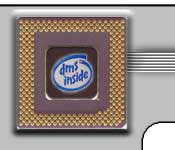|
System-on-chip Surface Plasmon Resonance Sensors Using
Pulse-based Interface Circuits
Lisa E. Hansen and Denise Wilson

This paper presents a means for reducing the
impact of dark current, photodetector mismatch (fixed pattern noise),
and the background medium on the signals generated by a surface plasmon resonance
(SPR) sensing system for determining the concentration of targeted
analytes in solution. Results for each circuit component (simulated and
experimental) correlate well, with a maximum error of 3%, 7% and 12% in
basic behavior (between simulated and actual results) for the dark
current reduction, background medium compensation, and weighted sum
circuits at relevant operating points, respectively. System level
results on SPR signals also demonstrate the usefulness
of these circuits for system-on-chip style signal processing. The chip
produces a single output that indicates the refractive index (and
resulting analyte concentration) of an SPR probe, independent of
fluctuations in the background medium.
|



